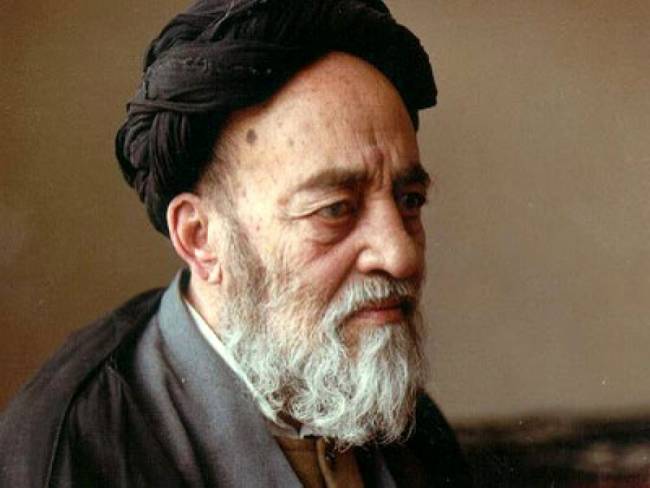AhlulBayt News Agency: This story is told by the studious historian, Dr. Rasool Ja’farian in his Maqalat va resalat-e tarikhi (Daftar-e chaharom), quoting from Hujjat al-Islam Mohammad Hossein Ash’ari, son of late Ayatollah Ali Asghar Ash’ari Qomi, one of the classmates of Imam Khomeini as below:
Toward the end of his life, ‘Allama Tabataba’i suffered from Parkinson’s disease and almost became paralyzed up to his neck and was hospitalized in Ayatollah al-‘Uzma Golpayegani hospital. I was with him most of the time during three days when he was in coma.
One day, Dr. Manafi – the minister of health at that time – came to the hospital for visiting him. When he saw ‘Allama’s condition, ordered to bring helicopter to take him to Tehran. I objected and said, “He may be alive only for few hours!”, but Dr. Manafi did not accept.
Then, the grand Ayatollah Golpayegani came to visit ‘Allama Tabataba’i. I told him about the situation and asked him,
“Please, you tell Dr. Manafi not to do that!”
He called Dr. Manafi and said,
“Wait until evening; if it isthen possible to move him, you move him!”
About two hours later, ‘Allama Tabataba’i passed away. I phoned Imam Khomeini and informed him of ‘Allama Tabataba’i’s death. He said,
“About his grave, you may proceed as you deem right. I will also order Mr.Mola’i.”
I went to Mr. Mola’i to specify the location of the grave. He introduced a place beside the grave of Mr. Eshraqi and Mr. Angaji. I objected and said,
“Since ‘Allama Tabataba’I was an exegete of the Qur’an and a philosopher, his grave should be an easier and clearer place for people to visit.” I objected to what Mr. Mola’i suggested. Then, I went and pointed the place where ‘Allama Tabataba’i’s grave is now. He said,
“This is a roof’s pillar and all armored concrete and cannot be dug out.”
I did not accept. He said, “Even if it can be dug out, here is the grave of religious scholars and we are not permitted to dig it out.” I said,
“I will solve this issue. Bring architects to say whether it can be dug out or not! Also, at the time of building Balasar mosque, Mr. Najafi made a list of the graves. We can ask him if there is a grave of a scholar here.”
Mr. Najafi came in the evening. After the prayer, I told him the story and asked him to come and explain if it was a grave of a scholar there.
He came and said,
“As far as I have listed, it is not anyone’s grave.” Mr. Mola’i said,
“why do you insist?” I said, “no, it’s not a grave here, and even if it is concrete, it is easy to find out.”
Finally, they accepted. They closed the doors at night and rolled the carpets aside and brought workers to dig out. They removed the marble tablet and then the tiles and there was no concrete. They removed the soil and remains. Then, they began hitting but it sounded like hitting a hard material. Mr. Mola’i said,
“I said it is concrete.” I rejected and said, “let’s see what would sound like that.”
We found large bricks. When they removed them, we surprisingly saw that a dug and ready grave is there without any bones or other things inside it. Mr. Mola’i said,
“It is like a miracle!” They buried Mr. Tabataba’i there.
Source: Sireh-ye farzanegan, ‘Abdul-husein Bozorgmehrnia, Saman-e Danesh publications
/129

